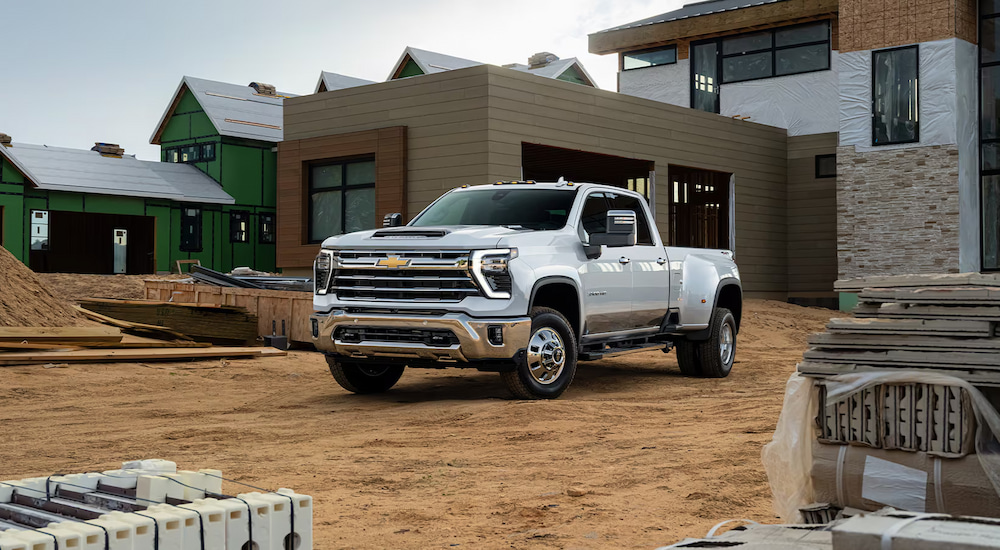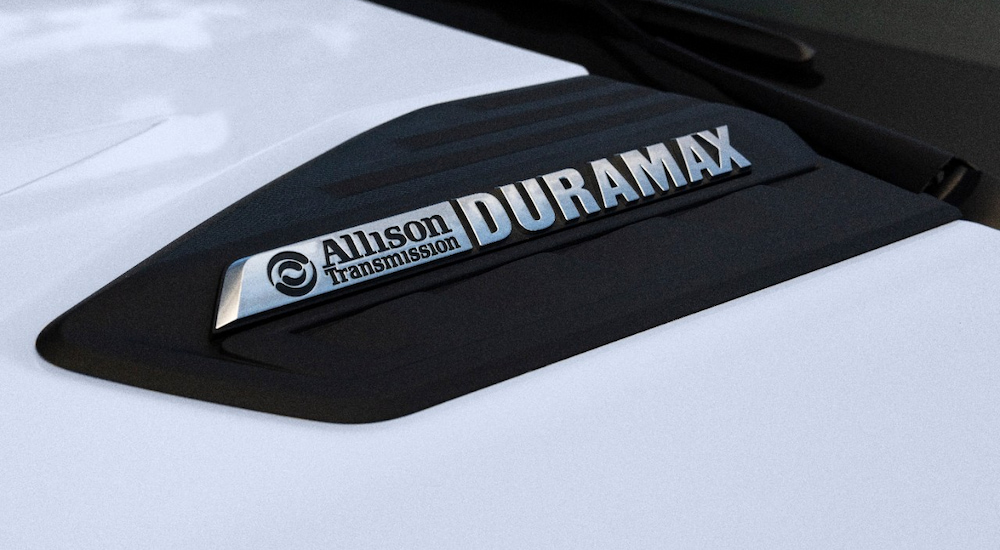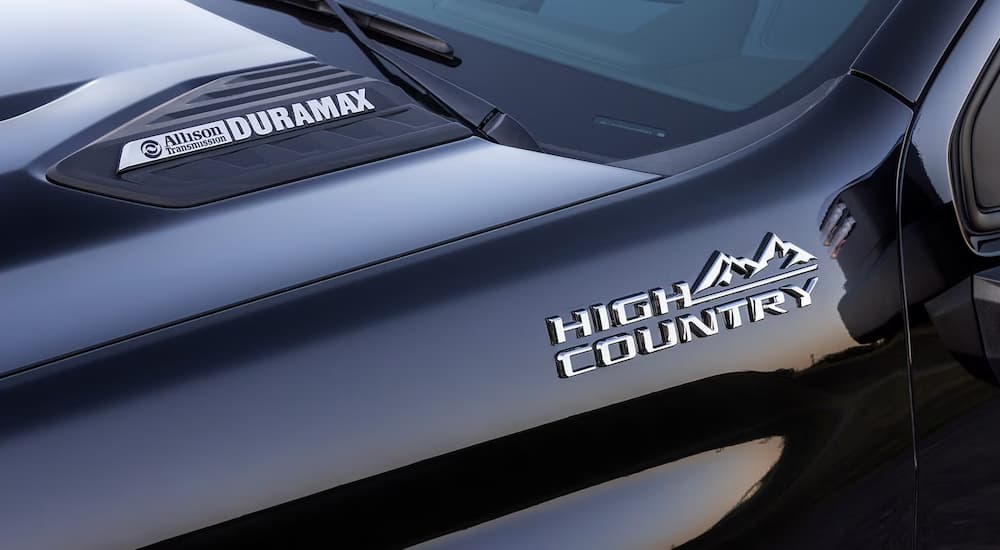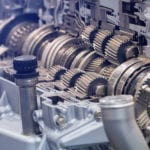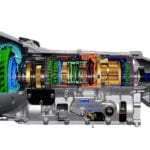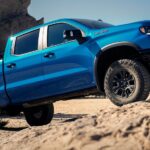On the surface, an M1 Abrams main battle tank, a school bus, and a Chevy Silverado 2500 HD might not have much in common. All three play an important role in society and are expected to deliver consistent performance over a range of demanding applications, but it’s the Allison transmission that ties these disparate vehicles together. For over 100 years, Allison has been producing some of the world’s most reliable, hardest-working transmissions, efficiently transferring power from the engine to the wheel to aid in military operations, job-site duties, and getting the kids to school on time. While a lot of brands claim to be the best, Allison has the resume to back it up: 300 of the world’s leading commercial and military manufacturers rely on Allison products to put in a hard day’s work, and Chevy is no exception.
Start browsing for a Chevy Silverado 2500 HD for sale, and you’ll notice the Allison name pop up time and time again. Allison’s 10-speed automatic transmission has been a fixture under the hood of many Silverado 2500 HD models since the turn of the millennium. While the Allison 1000 was once limited to the heavy-duty pickup’s Duramax diesel, Chevy has since expanded its use to all Silverado 2500 HD models. The Allison transmission boasts countless benefits over the transmissions found on most trucks, maximizing power, reliability, convenience, and even fuel economy to make the Silverado 2500 HD one of the most well-equipped trucks on the road. Allison has a long and interesting history, one that ranges from the battlefields of two World Wars to the mecca of motorsports that is the Indianapolis Motor Speedway. But how did Allison become the world’s largest designer and manufacturer of medium and heavy-duty automatic transmissions, and why is the brand’s Allison 1000 transmission the perfect pairing for the Chevy Silverado 2500 HD? Read on as we see how the company has continually managed to come in clutch without ever using one.
From Pens to Fighter Planes
To understand how Allison became the first and last name in automatic transmissions, we need to start with the man himself. James A. Allison could easily be described as a serial entrepreneur. Born in 1872, the businessman first made a name for himself with the introduction of the Allison Perfection Fountain Pen. Allison then turned his attention to the automobile industry in 1904 when, with the help of Carl Fisher and Percy Avery, he founded the Concentrated Acetylene Company. Later renamed Prest-O-Lite, the company produced a groundbreaking line of headlights by packing acetylene gas into portable cylinders. While it might sound like a minor contribution, the headlights played a big part in making nighttime driving a safer and more popular activity.
Innovations in lighting aside, it was Allison’s decision to build a world-class race track in his hometown that would cement his name in automotive history. Allison, along with Carl Fisher, Frank Wheeler, and Arthur Newby, would found the Indianapolis Motor Speedway in 1909. The venue’s marquee race, The Indianapolis 500, would debut two years later and holds the distinction of being the world’s oldest automotive contest. Allison became a regular at the track, funding a number of race teams, including his own Speedway Team Company, in 1915.
Allison’s team would capture the Indy 500’s checkered flag in 1919 and earn Allison a reputation as a man who knew his way around a car, but the dawn of World War I would see the race team evolve into the Allison Engineering Company (AEC). Specializing in the development and production of steel-backed bronze sleeve bearings and high-speed reduction gearing, AEC would prove just as adept in the aviation sphere as it had been when it came to automotive engineering. AEC’s wartime success would lead General Motors to buy the company following Allison’s death in 1928, with the company rechristened as the Allison Division of GM. The Allison Division would become a power player in the aviation industry with the introduction of its 12-cylinder V1710 aircraft engine that powered fighter planes like the P-38 Lightning and P-51 Mustang.
This is also where the first Allison transmission would enter the picture. The CD-850 cross-drive steering transmission would eventually find its way into the M46 Patton tank that saw service in Korea. Allison would also start experimenting with an automatic transmission built around a hydraulic torque converter, which would eventually come to represent a significant portion of the division’s business. Designed for use in heavy-duty vehicles like buses, railcars, and delivery trucks, it was the innovative torque converter and its ability to deliver rapid acceleration that would cement Allison’s early transmission success. The Torqmatic transmission would be followed by the V-Drive transmission for transit buses, but it was the MT-25 transmission for commercial trucks that would bring the Allison name into the mainstream. The six-speed automatic transmission would become a fixture on the heavy-duty vehicles of the 1950s. While GM initially kept the technology for itself, it would begin selling the MT-25 to Ford, Dodge, and International Harvester as the decade came to a close.
Allison continued to perfect the automatic transmission over the following years, debuting the World Transmission (WT) in 1991. The six-speed setup used the WT electronic control (WTEC) system to manipulate the clutch and was soon one of the most ubiquitous models on the market, powering 92 percent of all school buses and 75 percent of all public transit buses. The WT 3000 and 4000 Series transmissions would eventually be followed by the lighter 1000 and 2000 Series. The 1000 Series was designed to pair with the 6.6-liter Duramax diesel and 8.1-liter Vortec gas engines and is the same transmission that can be found in today’s Silverado 2500 HD.
What’s in a Name?
So, what makes the Allison transmission such a popular choice for today’s most demanding automotive applications? A century of engineering experience certainly doesn’t hurt, but it really all comes down to four factors: reliability, performance, fuel economy, and convenience. Let’s break each of these down and see why Allison has been the industry’s trusted source for heavy-duty transmissions.
Reliability
Next to the engine itself, the transmission is one of the most expensive components in any vehicle. Replacing a transmission is a bill most drivers are eager to avoid, which is why it’s so important to start with a transmission that’s designed to withstand the rigors of heavy-duty use. Allison transmissions have two things working in their favor when it comes to reliability: 100-plus years of experience and the fact that Allison specializes in automatic transmissions.
Unlike manual and automated manual transmissions, an automatic transmission is designed around a torque converter rather than a traditional clutch. These torque converters tend to require a lot less repair and maintenance, routinely getting by on little more than regular oil and filter changes. Automatic transmissions are nothing new, but it’s Allison’s long history with the technology that makes the most compelling case for its current offerings. Allison has patented a number of innovative advancements in torque converter technology, allowing the company to deliver the sort of performance, reliability, and acceleration that few can match. Allison transmissions are especially notable for their ability to resist rollback when accelerating from a dead stop on a steep hill, which is an important consideration when you’re behind the wheel of a heavy-duty truck like the Silverado 2500 HD.
Performance
Performance is often the first factor a driver will consider when picking between models, so it’s important that the transmission is not the powertrain’s weak link. The most powerful engine on the market doesn’t amount to much if the power it produces can’t get to the wheels in an efficient manner, but that’s where Allison transmissions come in. Built to a higher standard than the typical transmission you’d find on a light-duty vehicle, Allison transmissions deliver consistent performance without the typical loss of power. This is probably why Allison transmissions are the go-to choice of major construction and transportation companies, not to mention the United States military. They’re time-tested, and their ubiquity stands as a testament to their heavy-duty design.
Fuel Economy
A good transmission isn’t just quick and reliable; it’s also efficient. Allison has leveraged its Continuous Power Technology to produce one of the most efficient heavy-duty transmissions on the market, adding substantial value to any vehicle bearing the Allison name. Continuous Power Technology works by doubling the engine torque when the vehicle first starts off the line. This extra burst of torque allows Allison transmissions to reach their optimal operating range quicker than many competitors, improving fuel economy by almost eliminating the power loss that occurs when shifting between gears. This is made possible thanks to the hydraulic torque converter and planetary-geared transmission, which transfers maximum torque from the engine to the wheels every time you step on the gas. The process results in quicker and more efficient acceleration, but this isn’t the only clever bit of tech that sets the Allison design apart.
The transmissions are also built with Allison’s sixth-generation electronic control system, a sophisticated suite of smart controls focused on improving overall fuel economy while still delivering consistent, reliable performance. Some Allison transmissions are even available with FuelSense 2.0, an array of electronic and manual controls that uses features like DynActive Shifting, Acceleration Rate Management, and Neutral at Stop to maximize fuel economy in even the most demanding applications. Combine these myriad efficiency-focused features, and you have a transmission that allows vehicles to consume up to six percent less gas. A 2017 study by Copeland International found that the increased efficiency of an Allison transmission can result in annual fuel savings of $1,000 on some models.
Convenience
Finally, there’s the convenience factor. As every driver who has ever struggled to find a gear or perfect their clutch control knows, manual transmissions can be a bit of a hassle. Sure, they might offer a greater level of control and allow drivers to choose the right gear for the job, but a well-made automatic transmission can accomplish much of the same without requiring drivers to multitask as they’re speeding down the highway or performing a tricky towing or hauling job. Allison Transmission’s Continuous Power Technology provides smooth, predictable shifts without the need for micromanagement, freeing up a driver to focus on their cargo or keep their eyes on the road. An Allison automatic transmission is also a great choice for business owners who might be putting a less-experienced employee behind the wheel of their pricey heavy-duty truck without worrying about stripped gears or a blown clutch.
The Gold Standard in the Transmission World
From the earliest days of Prest-O-Lite to the development of the world’s most popular medium and heavy-duty transmission, Allison’s commitment to innovation has long set the company apart. Allison has never stopped reinventing itself and its goal of building a better transmission has paid dividends, introducing the market to some novel innovations while helping the brand become the gold standard in the transmission world. While Allison has now been part of GM for most of its history, the influence of founder James A. Allison can still be seen in the company’s DNA. Allison himself was more partial to the sort of high-speed thrills that could be found on the track, but he’d certainly appreciate the company’s meteoric growth and refusal to accept the status quo. There are lots of things that set the Chevy Silverado 2500 HD apart from the rest of the full-size segment, but the Allison name certainly does a lot of the heavy lifting.
